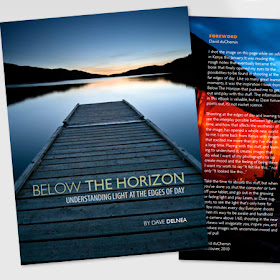 |
| Image courtesy of Working Harbor Committee |
~ It is good to see New York City’s
Working Harbor Committee (WHC) emerging from winter hibernation.
I am on the organization’s mailing list, and their latest
‘On The Hip’ e-newsletter lists a number of forthcoming activities, including
the very popular Hidden [New York] Harbor Tours.
I have joined three previous Hidden Harbor Tours (two in
2010, and another in 2012), and I consider them to be some of the best ‘hidden
gems’ of any visit to New York. You can read my account about one of those
tours
here…
 |
| Image courtesy of Working Harbor Committee |
Among events scheduled from now until the end of summer, are
a series of narrated tours under the theme: Beyond Sandy: Keeping the
Conversation Alive, as well as more Hidden Harbor Tours.
Beyond Sandy,
is described as a series of special Hidden Harbor Tours exploring the many
issues and plans arising from Super Storm Sandy, that focus on the array of
global warming and sea-level rise protection alternatives being discussed by
government, private institutions and citizens. Special guest speakers will
discuss and pose questions such as: Are Netherlands-style sea barriers the
answer? How did various neighborhoods fare and why? Fight the ocean or retreat?
And How did the working harbor fare and help?
Each tour will have two guest speakers from a number of
sources: the maritime industry, government agencies, private industry, think
tanks and universities, as well as other noted experts. The tours are two hours
in length and visit Red Hook, Sunset Park, The Verrazano Bridge, Staten Island,
Bayonne and Hoboken, the lower Manhattan shoreline and many points in between.
The tours leave from Pier 16 at the South Street Seaport
District (itself heavily impacted by Sandy – under 6 feet of water) at 6:30
p.m. on the large three-deck motor vessel Zephyr
There will be three different tours:
Tour 1 - High Seas
on the Inner Harbor: From Wall Street to Snug Harbor This
tour is from the Verrazano Bridge to Hoboken, including Brooklyn, Staten
Island, New Jersey, the Statue of Liberty and Ellis Island. See where giant sea
gates are proposed.Tuesday
- 21 May, 2013Tuesday
- 18 June, 2013
Tour
2 - Fire, Floods and Floating Containers: East River - Hell Gate to Governors
Island This
tour traverses the East River from Queens to Governors Island, including the
East Side of Manhattan, Newtown Creek and Brooklyn Navy Yard. See the site of
the giant electric sub-station explosion.Tuesday
- 28 May, 2013Tuesday
- 25 June, 2013
Tour
3 – Protecting Our Ports: From Red Hook to Newark Bay.This
tour traverses Kill van Kull to Newark Bay, including container terminals, oil
docks, tug yards, and rail yards. Learn how close we came to a goods delivery
crisis.Tuesday
- 4 June, 2013
North River Tour on June 11
 |
| Image courtesy of WHC. Inset: Bill Miller. |
Hosted by Bill Miller, this tour will begin by passing
around the southern tip of Manhattan and the large ferry terminals to Staten
Island and Governors Island.
It will also travel north up along the west side of
Manhattan passing the Battery and Castle Clinton, then most of Hudson River
Park, including historic ships, ferry terminals, fireboat terminals, historic
Pier 57, Chelsea Piers, excursion boats, the Intrepid Sea, Air, and Space
Museum and finally the passenger ship terminals.
The tour will then cross over to the New Jersey side passing
the historic Hoboken waterfront, scene of "On The Waterfront",
another active shipyard, Morris Canal entrance and finally, as all tours do, it
will visit the Statue of Liberty before returning to Pier 16.
The tour departs from Pier 16 at the South Street Seaport
District at 6:30 p.m. on the large three-deck motor vessel Zephyr
TICKETS:
Adults: $39.00 | Children (3-12 yrs): $25.00 | Seniors:
$32.00
WHC, South Street Seaport and THIRTEEN Members: $32.00
Here is a short video I put together after my 2012 Hidden
Harbor Tour:
I would dearly love to join one of the above Hidden Harbor
Tours, but sadly, I won’t be visiting New York City this year. However, if I
visit again in 2014 as I hope to do, a fourth tour will be definitely part of
my trip.
Additional Hidden Harbor Tours including Port
Newark/Port Elizabeth and Brooklyn are being planned for July, August and
September. If you think these unique tours might appeal to you, I highly
recommend you signup for ‘On The Hip’, the official e-newsletter of the Working
Harbor Committee, and bookmark the organization’s blog for ongoing news and information.





































